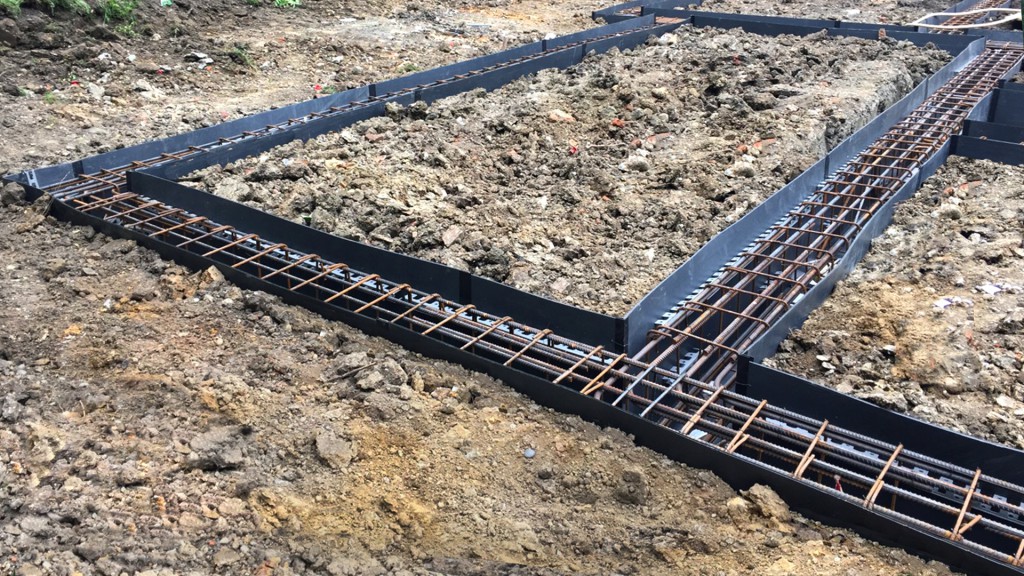The type of foundation used within your basement conversion or basement extension is determined by several factors. These include the condition of the ground or soil being built upon, and the weight and style of the construction work within your building project.

Strip foundations
Strip foundations support load-bearing walls using a solid strip of concrete.
This type of foundation is ideal for basements as the depth and width of the concrete strip can be adjusted to suit the load-bearing capacity of the soil, as well as the height of the basement walls.
Being able to lay strip foundations within deep trenches makes it possible to reach the most suitable soil; that being one of a consistency and structure that is robust enough to support a basement build.
If the ground is assessed as possessing a low load-bearing capacity, and standard strip foundations are deemed unsuitable, the solution can be found in the use of wide strip foundations. As the name suggests, these foundations are wider than standard strip foundations and are also reinforced with steel. These wider, stronger foundations enable the load to be distributed over a wider surface area.
Pad Foundation
Where a basement requires columns as part of the construction, the foundations required to support them are known as pad foundations. These foundations are typically formed in the shape of a rectangle or square, and allow the load of the column being built upon it to be transferred into the soil.
The exact dimensions of the pad foundations are determined by the weight of the columns being built.

Raft Foundation
Raft foundations are the foundations used when the ground being built upon is particularly weak and where wide strip foundations would have to be far too wide in order for them to do their job. Ground surfaces such as peat and clay commonly use raft foundations.
The term raft refers to the fact that the foundations act as a raft for the building, allowing the construction to almost float on top of the relatively flimsy ground beneath.
As well as allowing for construction on weak, low load-bearing ground, raft foundations also have the benefit of being more cost effective than piling.
Trench fill Foundation
Trench fill foundations are quite simply trenches filled with concrete. This method of laying foundations can provide considerable cost savings, as the trenches are shallower and narrower than those required for deep strip or wide strip foundations.
Trench fill foundations can also be reinforced with steel where nearby trees or other obstacles may pose a risk to the foundations.